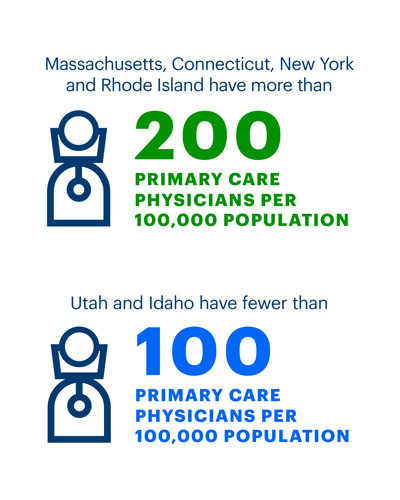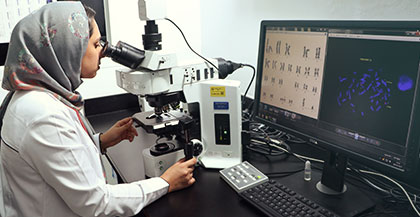Climate Change, Children and Pollutants: Recipe for Health Concerns
/The environmental damage caused by continuing to burn fossil fuels affects children most, with one study indicating that an estimated that about 88 percent of the disease from climate change afflicts children.
In an article this month in the web-based science publication Massive, Renee Salas, an academic emergency medicine physician at Massachusetts General Hospital and Harvard University Medical School, says that while studies on climate change are still emerging, there has been enough research to result in a broad scientific agreement that climate change is negatively affecting children’s health.
The article points out that Frederica P. Perera, a professor of environmental health sciences and director of the Columbia Center for Children’s Environmental Health, recently released a review article “showing yet again how air pollution and climate change interact to multiply the negative health effects children face.” The combination of air pollutants and warmer temperatures creates a perfect storm where chemicals emitted into the atmosphere interact to multiply the effects that each would have alone, the article states.
“People of all ages are exposed to this myriad of air pollutants in the changing climate, but children are more at risk of a wide spectrum of negative health effects because their developing bodies can suffer permanent damage from interference with their growth, Salas explains.
Investigators at the Yale Center for Perinatal, Pediatric and Environmental Epidemiology (CPPEE) at the Yale School of Public Health are engaged in a number of population-based studies in the U.S. and China intended to give us a better understanding of the health risks associated with exposure to relatively low and high levels of air pollution in childhood and during pregnancy.
The Center’s website points out that environmental factors are estimated to account for 24 percent of global diseases (WHO – Preventing Disease through Healthy Environments). In terms of the environmental contribution to disease, respiratory infections are ranked second, perinatal conditions seventh, and asthma fifteenth. Air pollution is a major environmental risk factor in all three diseases.
Asthma is a major chronic disease in the US, accounting for more than two million emergency room visits and $14 billion in health care costs and lost productivity per year, the website indicates. Asthma is the most common chronic illness of childhood, accounting for more absenteeism (14 million missed school days per year) than any other chronic disease. Absenteeism impacts academic performance, participation in extracurricular activities, and peer acceptance.
 The Yale School of Public Health also points out that “underserved populations are especially affected by asthma.” In Connecticut, for example, asthma prevalence of 9.9 percent is among the highest in the U.S., they report. The rate among children enrolled in Connecticut’s HUSKY program (health insurance program for uninsured children) is 19.5 %. Increases in asthma and allergy are likely due to a combination of factors--genetic, environmental, socioeconomic, lack of access to care, and differential treatment.
The Yale School of Public Health also points out that “underserved populations are especially affected by asthma.” In Connecticut, for example, asthma prevalence of 9.9 percent is among the highest in the U.S., they report. The rate among children enrolled in Connecticut’s HUSKY program (health insurance program for uninsured children) is 19.5 %. Increases in asthma and allergy are likely due to a combination of factors--genetic, environmental, socioeconomic, lack of access to care, and differential treatment.
The Massive article goes on explain that the potential harm starts early. Once a child is born, the brain, lungs, and immune system aren’t fully formed until the age of six, the article states. “Even their air and food exposure in proportion to their size is much higher than adults – the amount they eat in relation to their body weight is three to four times greater than that of adults.”
She goes on to state the “Children also have an increased risk for being developmentally delayed, having lower intelligence scores, and less of a certain part of the brain called white matter, the stuff that helps you walk and talk. Their mental health is also at risk as children exposed to air pollution have higher rates of anxiety, depression, and difficulty paying attention.”
Salas notes that in addition to caring for patients who have negative health impacts from climate change, she uses her masters in Clinical Research and masters in Public Health in Environmental Health for research, education, and advocacy in this field. Says Salas, “I believe that climate change is the biggest public health issue facing our globe and am dedicating my career to making any positive difference I can.”



 he Division of Pediatric Surgery since 2007 and is an associate professor of pediatrics and surgery at UConn Health. In announcing her appointment, Connecticut Children’s pointed out that through her research, Finck “revolutionized outcomes of pediatric and neonatal diseases, most specifically leading efforts focused on identifying and treating those that affect the lungs, esophagus and brain.” She was honored by The Group on Women in Medicine and Science, who awarded her the Outstanding Clinical Scientist Woman Faculty Award, last year.
he Division of Pediatric Surgery since 2007 and is an associate professor of pediatrics and surgery at UConn Health. In announcing her appointment, Connecticut Children’s pointed out that through her research, Finck “revolutionized outcomes of pediatric and neonatal diseases, most specifically leading efforts focused on identifying and treating those that affect the lungs, esophagus and brain.” She was honored by The Group on Women in Medicine and Science, who awarded her the Outstanding Clinical Scientist Woman Faculty Award, last year.

 The model reflects that determinants of health directly influence health outcomes. A health outcomes category and four categories of health determinants are included in the model: behaviors, community & environment, policy and clinical care.
The model reflects that determinants of health directly influence health outcomes. A health outcomes category and four categories of health determinants are included in the model: behaviors, community & environment, policy and clinical care.










 The mission of the Jordan Porco Foundation, a 501(c) (3) public charity, is to prevent suicide, promote mental health, and create a message of hope for young adults. They accomplish this by providing engaging and uplifting peer-run programs. Their programs strive to start a conversation about mental health that reduces stigma while encouraging help-seeking and supportive behaviors.
The mission of the Jordan Porco Foundation, a 501(c) (3) public charity, is to prevent suicide, promote mental health, and create a message of hope for young adults. They accomplish this by providing engaging and uplifting peer-run programs. Their programs strive to start a conversation about mental health that reduces stigma while encouraging help-seeking and supportive behaviors.



 A synthetic turf study was undertaken in 2016 by four United States agencies — EPA, Consumer Products Safety Commission, the Centers for Disease Control and Prevention/Agency for Toxic Substances and Disease Registry — which has yet to be finalized.
A synthetic turf study was undertaken in 2016 by four United States agencies — EPA, Consumer Products Safety Commission, the Centers for Disease Control and Prevention/Agency for Toxic Substances and Disease Registry — which has yet to be finalized. Blumenthal first became concerned about the artificial surface when his children were playing on the crumb-rubber athletic fields. “I became concerned as a parent, as much as a public official, ten years ago, and at first was somewhat skeptical, but now very firmly believe that we need an authoritative, real study about what’s in these fields,” Blumenthal told ABC News two years ago.
Blumenthal first became concerned about the artificial surface when his children were playing on the crumb-rubber athletic fields. “I became concerned as a parent, as much as a public official, ten years ago, and at first was somewhat skeptical, but now very firmly believe that we need an authoritative, real study about what’s in these fields,” Blumenthal told ABC News two years ago.
























